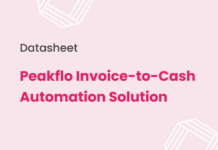Unapplied payments can be a headache for businesses. These are payments that have been received from customers but cannot be matched to any specific invoice or account. Understanding unapplied payments and knowing how to manage them is crucial for maintaining accurate financial records and ensuring proper cash flow.
In this blog, we’ll delve into the concept of unapplied payments, explore why they occur, and discuss strategies for managing them effectively.
What are Unapplied Payments?
Unapplied payments, also known as unapplied cash, are payments that have been received by a business but have not yet been applied to a specific customer account or open invoice. These payments typically sit in a suspense account until they can be properly matched and allocated. Unapplied payments can be of many types, including:
- Overpayments: When a customer pays more than the amount due on an invoice, the excess amount becomes an unapplied payment.
- Underpayments: If a customer pays less than the full amount due on an invoice, the payment may be recorded as unapplied until the balance is settled.
- Misapplied payments: Payments that are applied to the wrong customer account or invoice can result in unapplied cash.
- Processing errors: Errors in payment processing or data entry can lead to unapplied payments.
Why Unapplied Payments Are a Problem?
Unapplied payments can create several problems for businesses, including:
1. Inaccurate financial reporting
Unapplied payments can distort financial statements because they represent funds received but not yet assigned to specific invoices or accounts. This makes it harder for businesses to see their true financial health, as these unmatched payments can make revenue or accounts receivable figures look higher or lower than they really are. As a result, this can lead to wrong financial decisions and give stakeholders a misleading view of the company’s financial position.
2. Cash flow issues
Unapplied payments lock up cash that could be used for important business needs, like paying suppliers or investing in growth. If payments aren’t applied quickly, it can cause cash flow shortages, making it harder for the company to run smoothly. This can lead to missed opportunities and may force the business to rely more on external financing for daily expenses.
3. Customer dissatisfaction
Customers want their payments applied to their accounts accurately and quickly. When payments stay unapplied for too long, customers can become frustrated with the billing process. This can hurt the company’s reputation and lead to complaints and disputes. Applying payments promptly is essential to keep customers happy and maintain good relationships.
4. Risk of loss
Unapplied cash that is not correctly matched and assigned is at risk of being lost or misused. This can happen because of mistakes in recording or processing payments or even due to fraud. Unresolved unapplied payments can cause differences in financial records, making it hard to find and recover missing funds. Using strong internal controls and regularly reconciling accounts can help reduce the risk of loss associated with unapplied payments.
Common Reasons Why Unapplied Payments Occur?
Unapplied payments happen when payments are made but not linked to specific invoices or accounts. Here are some common reasons for this issue:
1. Incorrect posting
One main reason for unapplied payments is incorrect posting, where payments are mistakenly matched to the wrong customer account or open invoice. This often happens due to human error or system issues. For example, if a customer pays without mentioning their invoice number, the payment may stay unapplied until the correct invoice is found. To prevent this, it’s essential to have strong payment reconciliation processes and ensure all payments are matched accurately with their invoices.
2. Missing or incomplete information
A common reason for unapplied cash is receiving payment without enough information to identify the customer or invoice. This often happens when customers give incomplete remittance details or don’t include any identifying information with their payment. To avoid this, businesses should remind customers to include complete remittance information and consider using automated systems for accurate payment matching.
3. Bank errors
Unapplied cash can happen when banks make mistakes, like misdirecting payments, duplicating deposits, or delaying processing. For example, if a customer’s payment goes into the wrong bank account, it can take time to find and apply it correctly. To prevent this, businesses should regularly reconcile their bank statements, quickly look into any differences, and stay in close contact with their banking partners.
4. Discrepancies in currency or exchange rate
Unapplied cash can happen in international transactions when there are differences in currency or exchange rates. For example, if a customer pays in another currency or if the exchange rate changes between the time of payment and reconciliation, this may leave cash unassigned. To reduce this risk, businesses can use automated currency conversion tools, give clear instructions for international payments, and closely track exchange rate changes.
5. Inefficient cash management processes
Inefficient cash management can leave cash unapplied and create exceptions. Payment delays or poor communication between departments often cause cash to stay unapplied for long periods. To improve cash management, businesses should simplify payment processes and set up clear communication between teams.
How to Proactively Manage Unapplied Payments?
Managing unapplied payments requires a proactive approach. Here are some strategies for effectively managing unapplied payments:
1. Regular reconciliation
Regular reconciliation means checking the payments you’ve received against the invoices you’ve sent and the customer accounts. This helps you find any payments that haven’t been matched to an invoice. It’s important to do reconciliation regularly—like daily or weekly—based on how many transactions you have. This way, you can quickly spot and fix any unmatched payments. You can do this by hand or use accounting software to automate the process.
2. Clear payment instructions
To avoid unapplied payments, it’s important to give your customers clear payment instructions. Include details like preferred payment methods (check, wire transfer, online payment), the correct formats for payments, and any reference numbers (like invoice number or customer ID) they should add when making a payment. Clear instructions ensure that customers provide all the necessary information, making it easier to allocate their payments correctly.
3. Timely follow-up
Timely follow-up is key to resolving discrepancies or unapplied payments. If you can’t match a payment to an invoice or customer account, reach out to the customer right away for more information. This could mean calling or emailing them to ask for extra details or clarification. By quickly addressing unapplied cash, you can keep your financial records accurate and ensure that customers are happy with the billing process.
4. Automated matching
Automated cash application solutions make it easier to match payments with invoices and customer accounts. These tools use algorithms to quickly match payments based on things like invoice numbers, customer IDs, and payment amounts. By automating this matching process, businesses can lower the chances of human error and ensure that payments are applied correctly. This also boosts efficiency by cutting down the time and effort needed for manual matching.
By implementing these strategies, businesses can effectively manage unapplied payments and ensure that their financial records are accurate.
How AI Is Impacting Unapplied Payments?
AI is transforming the way businesses handle unapplied payments by making the process faster and more efficient. AI-powered cash application solutions significantly reduce the time and costs associated with processing payments.
AI can analyze large sets of historical receivables data to spot patterns in invoices and payments and match payments to the correct invoices based on criteria like amount and date. This allows the technology to detect even small variations in payment information and process them accurately. Additionally, AI-powered OCR scans receipts and matches them to the correct invoices using payment reference numbers.
This reduces the time teams spend manually searching for missing information. Moreover, AI can learn from past transactions, improving its accuracy over time.
Check out the video below to learn more about how AI is transforming cash applications.
How to Streamline Payment Application with Peakflo?
Peakflo’s AI-powered Cash Application solution seamlessly integrates with accounting software, streamlining your receivables process. Let’s take a look at how it helps in managing unapplied payments:
- Automatically sync all your bank transactions in real-time with Peakflo, so your finance team can say goodbye to manual bank statement imports!
- Capture remittance data with AI-powered OCR technology which then automatically applies payments to overdue invoices based on the reference number, customer ID, or other customizable rules, reducing manual effort and improving efficiency.
- Automate your 3-way matching by letting Peakflo’s AI automatically match remittance details with invoices and bank statements, flagging any mismatches.
- Automate partial cash application by using Peakflo’s intelligent matching, which gives probability scores to help your AR team quickly confirm the right invoice matches.
- Set up automated unapplied payment reminders based on your payment reconciliation frequency.
- Provide customers with visibility over unapplied payments through Peakflo’s Customer Portal, allowing them to apply payments against invoices directly.
- Make account reconciliation easy with touchless posting for quick same-day closings using Peakflo’s smart auto-matching that sends all info back to your accounting software or ERP.
A Way Forward
Unapplied payments can be a challenge for businesses, but with the right strategies, they can be managed effectively. By understanding why unapplied payments happen and taking proactive steps to address them, businesses can reduce their impact on financial operations and keep cash flow running smoothly.
Automating the manual steps for applying payments can save your team a lot of time and effort. However, the success of automation depends on how accurate the original data input is. Regularly reviewing this data is important to maintain accuracy and lower the chances of unapplied or duplicate payments. Additionally, using technology can make many tasks in the accounts receivable process easier.






































